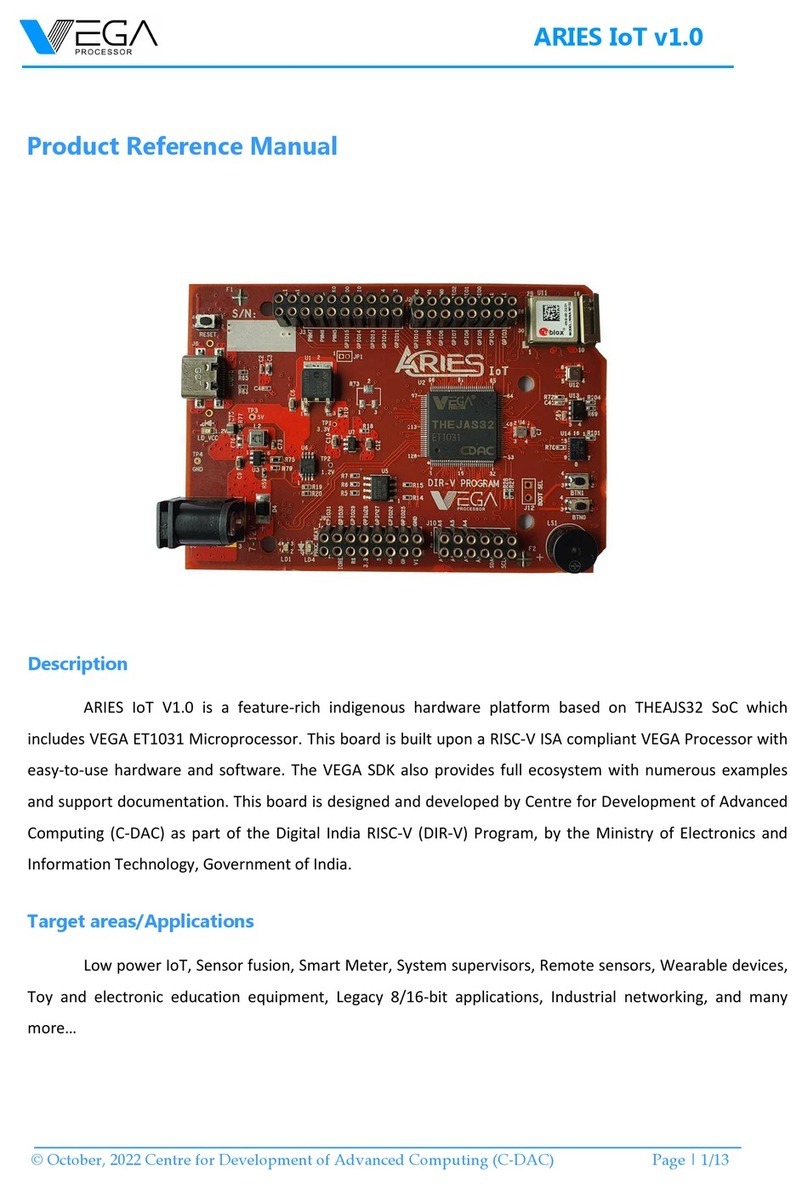
© March, 2023 Centre for Development of Advanced Computing (C-DAC) Page 5/12
Ref. Description Ref. Description
J8 Po er jack U2 THEJAS32 SoC
J6 USB C Connector U1 3.3V Regulator
J12 Boot Select Header U4 100 MHz Oscillator
RESET Reset Button U5 SPI Boot Flash Memory
LD1 RGB LED U6 Op-amp
3.2 Processor
The main controller is THEAJS32 SoC hich operates at a frequency of 100MHz. It includes VEGA ET1031
Microprocessor, 256KB internal SRAM, Three UARTs, Four SPIs, Three TIMERs, Eight PWMs, Three I2C
interface, 32 GPIOs. Most of its pins are connected to the external headers, ho ever some are reserved for
internal communication.
3.3 THEJAS32 pinout
Pin # Pin Name Pin Description
Ground reference for IO pins.
Positive supply for IO pins. Connect to 3.3V supply.
SPI 3 Master Out Slave In.
Positive supply for logic. Connect to 1.2V supply.
Ground reference for logic.
SPI 3 Master In Slave Out.
Ground reference for IO pins.
supply for IO pins. Connect to 3.3V supply.
Positive supply for logic. Connect to 1.2V supply.
Ground reference for logic.
Connect to GND through a 1K
JTAG TDO. Left unconnected.
JTAG TMS. Connect to GND through a 1K resistor.
JTAG TDI. Connect to GND through a 1K resistor.
Ground reference for IO pins.
25 PVDDIO19 Positive supply for IO pins. Connect to 3.3V supply.
Positive supply for logic. Connect to 1.2V supply.
Ground reference for logic.
JTAG TCK. Connect to GND through a 1K resistor
JTAG TRST. Connect to GND through a 1K resistor





























